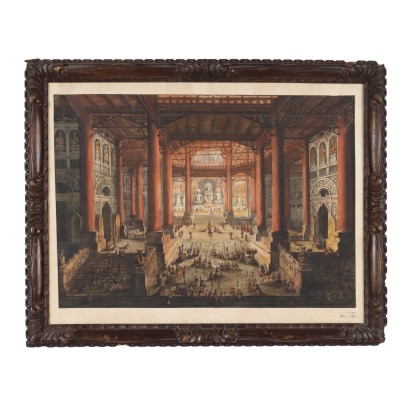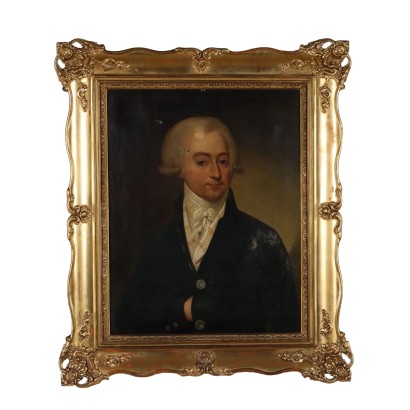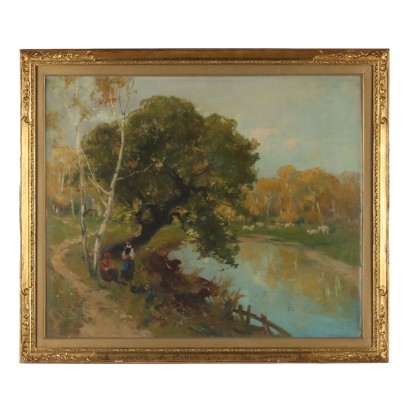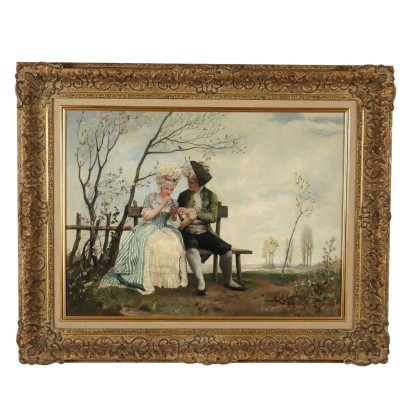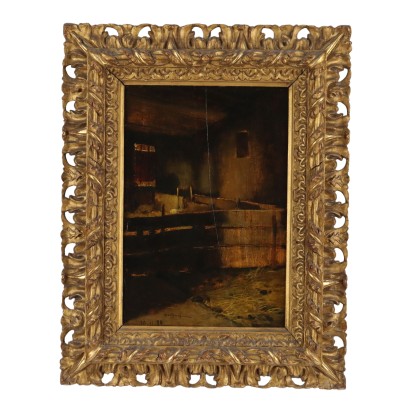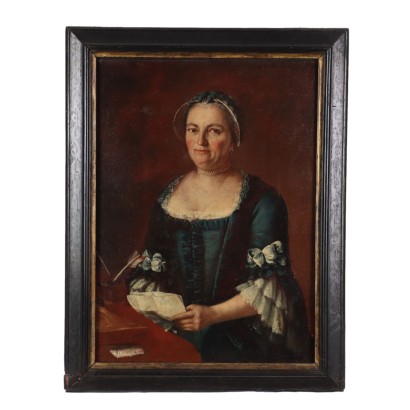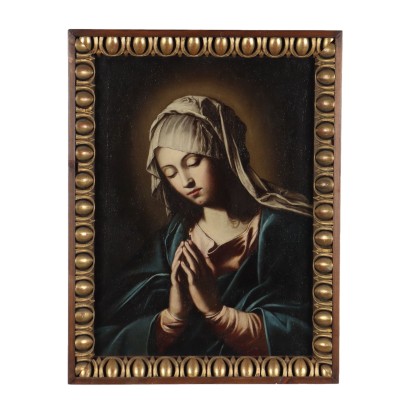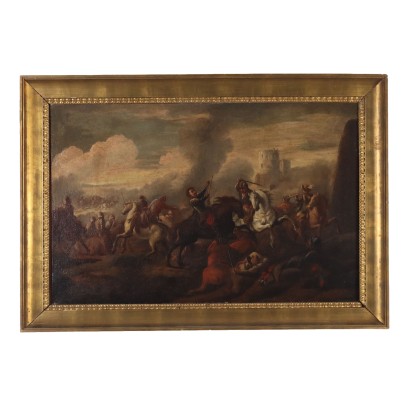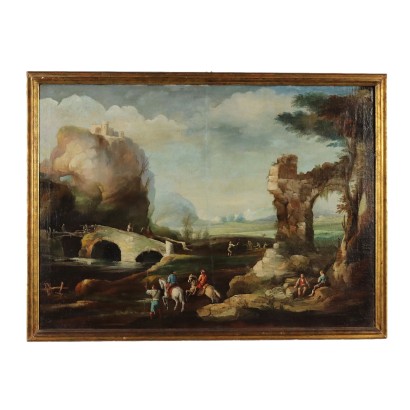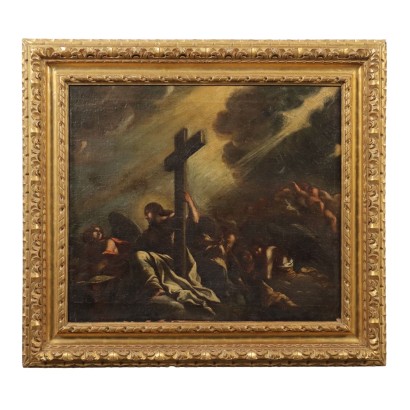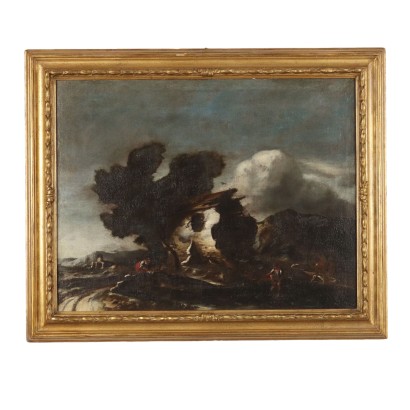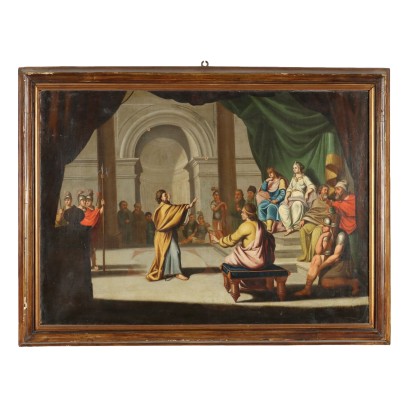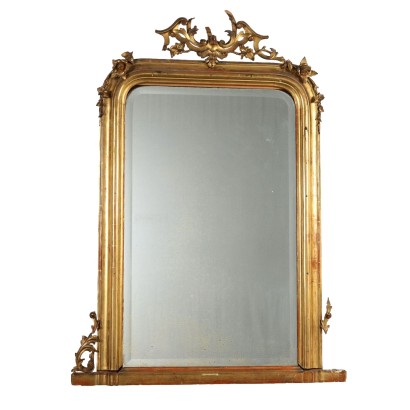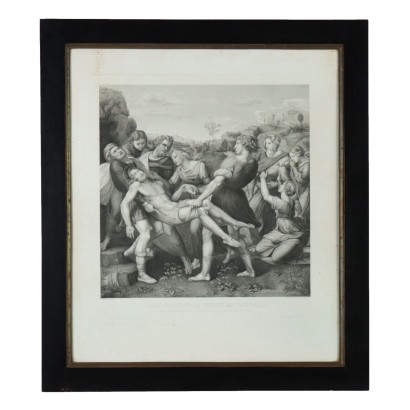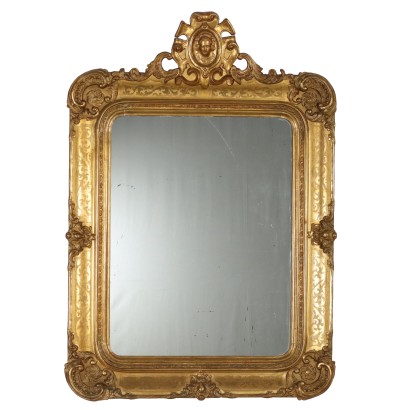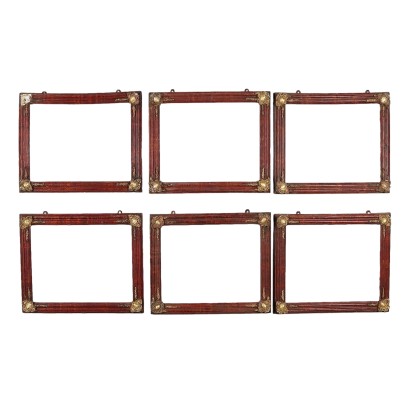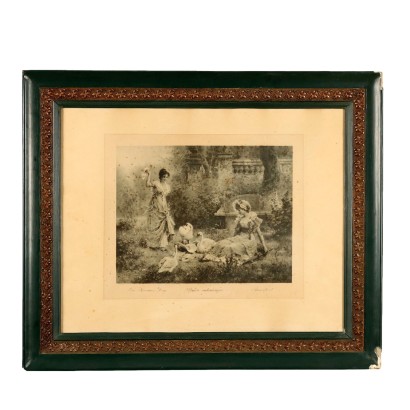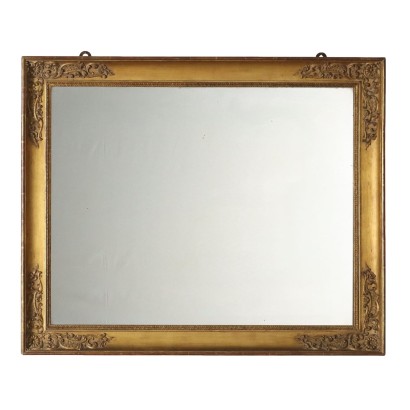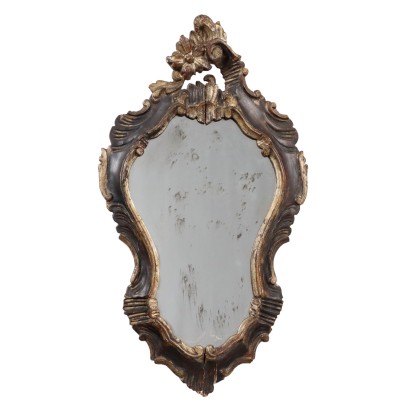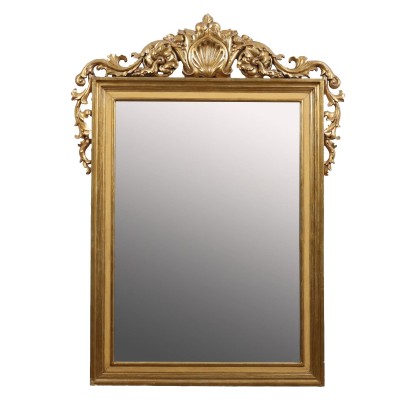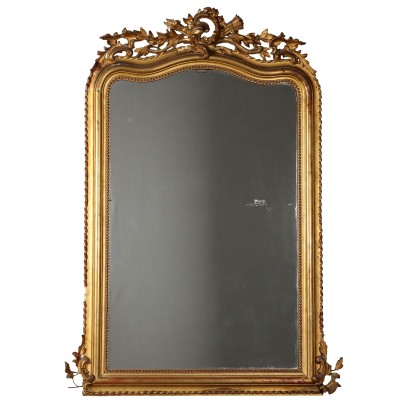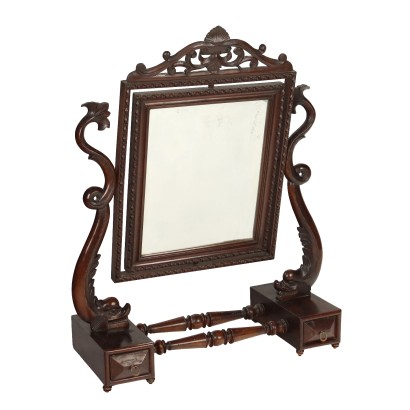Painting by Antonio Basoli attributed to - Interior of the Temple of God Brahma
Features
Interior of the Temple of God Brahma
Artist: Antonio Basoli (1776-1848) Attributed to
Artwork title: Interno d tempio del dio Brama
Age: 19th Century / 1801 - 1900
Subject: Scene with Figures
Artistic technique: Drawing
Technical specification: Mixed Technique
Description : Interno d tempio del dio Brama
Watercolor, ink and pencil on paper. Applied to cardboard, on which at the bottom appears the owner's pencil inscription "Inventions, interior of the temple of the god Brama. Original by Professor Antonio Basoli". Also present, at the bottom right, is the stamp "Professor Antonio Basoli". Given his long career as a teacher at the Academy of Fine Arts in Bologna, it can be assumed that one of his students became the owner of this drawing by Basoli, probably a scenographic sketch. Antonio Basoli established himself as a scenographer and decorator. Thanks to his creativity, he was able to integrate the Bolognese scenographic traditions with new trends, such as the neoclassical style and romantic vedutism. His scenographic production, documented in the collection of booklets of the Biblioteca Marucelliana in Florence from 1808 to 1820, was very vast, as demonstrated by his numerous sketches preserved mostly in Bologna, Milan and Florence. The drawing is presented in a period frame.
Product Condition:
Product in good condition, shows small signs of wear. We try to present the real condition as completely as possible with the photos. If some details are not clear from the photos, what is reported in the description is valid.
Frame Size (cm):
Height: 51
Width: 65
Depth: 3
Artwork dimensions (cm):
Height: 39
Width: 54
Additional Information
Artist: Antonio Basoli (1776-1848)
Set designer, decorator and painter, born in Castel Guelfo (BO) in 1774, after an initial activity at his father's workshop, in 1786 Antonio Basoli began his studies at the Accademia Clementina, which he finished in 1794. Together with Pelagio Palagi he was often invited to the Aldrovandi house, whose landlord allowed them access to the vast family library and with whom he formed a lasting friendship. Subsequently Basoli received increasingly prestigious assignments within the artistic institution, even after the transition from the Accademia Clementina to the National Academy of Fine Arts, which took place in 1804. In 1801 he was called to Trieste for the decoration of three rooms in the Muratori house. Returning to Bologna the following year he left again for Friuli where, quoting Basoli himself, "I was commissioned to go to Spilimbergo del Friuli to paint a palace". In 1803 he began his career as a professor of ornamental design at the Academy of Bologna, an activity that ended only with his death. Many of the Bolognese painters and decorators of the 19th century emerged from his courses, thus influencing the national aesthetic culture. Also in 1803 we owe the execution of the Orsi tomb in the cemetery of the Certosa of Bologna. Two years later Basoli saw his dream of visiting Rome come true: from the Capitoline city he returned with an enormous quantity of drawings, ideas and books useful for his entire artistic life. Inside the Academy, the exhibition of his works is reported during the course of several customary annual awards. But even outside the Bologna Academy he undertook his own independent path, establishing himself from the beginning as one of the most highly rated decorators of rooms in the residences of the Bolognese aristocracy. At the same time he continued a vast activity as a theatrical ornamentalist, with commissions for the main theaters of Bologna, Romagna and Marche. In 1818 he stayed in Milan. After this date he never left Bologna: an artist very attached to his territory, he chose to rarely leave it, even refusing extremely prestigious opportunities, such as the one requested at the court of the Tsars in St. Petersburg. His roots were however overcome with a vast dissemination of his works through engravings, the execution of which was often entrusted to his brothers (Luigi and Francesco) and his students. His prints had an international success and to this day are among the most sought-after graphic works of the Italian 19th century. Basoli died in Bologna in 1848.Age: 19th Century / 1801 - 1900
19th Century / 1801 - 1900Subject: Scene with Figures
Artistic technique: Drawing
Il disegno è il processo di tracciare segni su una superficie tramite l'applicazione di una pressione o il trascinamento di un apposito strumento sulla superficie. Gli strumenti sono: matite in grafite o colorate, penna, pennelli fini con inchiostro, pastelli a cera o carboncini; i supporti tradizionali più frequenti sono carta, cartoncino, tavola, muro, tela, rame, vetro.Technical specification: Mixed Technique
Other customers have searched:
Arte ottocento, artisti italiani, dipinti 800, dipinto olio su tela, dipinto antico, dipinto paesaggio, dipinti natura morta, arte antica, dipinto olio su tavola..
Se sei un appassionato d'arte, non perderti i nostri approfondimenti sul Blog Arte Di Mano in Mano e su FineArt by Di Mano in Mano - Arte:
Leggi di più
Ecco alcuni tra i principali articoli:
Vedute
Falsi nell'arte antica
Un messaggio di fiducia per ripartire
La potenza espressiva dell'arte figurativa etiope
Breve Storia del Collezionismo
Giorgio Upiglio, maestro dei libri d'artista
Matthias Withoos detto "Calzetta bianca"
San Rocco pensaci tu - Classic Monday
Dai un'occhiata alle nostre rubriche di divulgazione sull'arte:
Epoche
Lavorazioni e tecniche
Mostre ed Eventi
Protagonisti
Ti suggeriamo di guardare anche le presentazioni di questi dipinti ottocenteschi:
Tavoletta Porcellana Regina Luisa di Prussia, Berlino, Ultimo Quarto XIX secolo
Veduta di Frascati, Achille Etna Michallon, ambito di, terzo decennio XIX secolo, olio su tela
Venere Dormiente, Claudio Rinaldi, 1899
Sapevi che l'arte può essere anche un ottimo investimento (e non solo per grandi portafogli)?
L'Arte tra Collezionismo e Investimento
FineArt: Arte come investimento
Leggi di più
Ecco alcuni tra i principali articoli:Vedute
Falsi nell'arte antica
Un messaggio di fiducia per ripartire
La potenza espressiva dell'arte figurativa etiope
Breve Storia del Collezionismo
Giorgio Upiglio, maestro dei libri d'artista
Matthias Withoos detto "Calzetta bianca"
San Rocco pensaci tu - Classic Monday
Dai un'occhiata alle nostre rubriche di divulgazione sull'arte:
Epoche
Lavorazioni e tecniche
Mostre ed Eventi
Protagonisti
Ti suggeriamo di guardare anche le presentazioni di questi dipinti ottocenteschi:
Tavoletta Porcellana Regina Luisa di Prussia, Berlino, Ultimo Quarto XIX secolo
Veduta di Frascati, Achille Etna Michallon, ambito di, terzo decennio XIX secolo, olio su tela
Venere Dormiente, Claudio Rinaldi, 1899
Sapevi che l'arte può essere anche un ottimo investimento (e non solo per grandi portafogli)?
L'Arte tra Collezionismo e Investimento
FineArt: Arte come investimento
Product availability
The product can be seen at Cambiago
Immediate availability
Ready for delivery within 2 working days from ordering the product.



